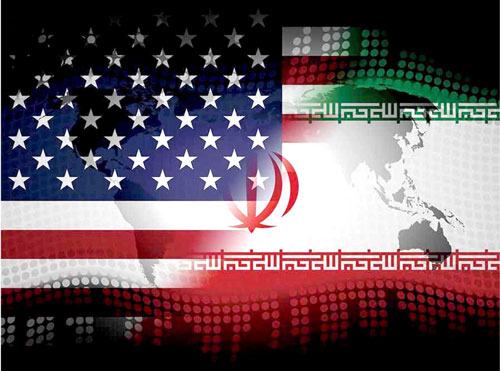Kanwar Muhammad Javed Iqbal
GROWING concerns have been observed regarding the momentum of China-Pakistan Economic Corridor (CPEC) projects under Belt and Road Initiative (BRI), particularly for the Gwadar Gateway development during the current governance regime in Pakistan. But, the ongoing progress on CPEC projects can be seen quite satisfactory considering the recent projects including a 300MW Gwadar Coal Power Plant, New Gwadar International Airport and Motorway sections. Work for the establishment of Allama Iqbal Industrial City adjacent to SEZ M3 Faisalabad will not only meet the country’s growing demand for textile, steel, pharmaceuticals, engineering, chemicals, food processing, plastics and agriculture supplement etc., but also complement export and FE earnings. The ultimate outcome of CPEC projects would provide brighter prospects to the GDP growth rate of Pakistan.
The regional connectivity agenda of CPEC Framework aims to uplift socio-economic status and bring prosperity through peace and strong economic cooperation with enhanced unimpeded bilateral and multilateral trade. It will have positive impact on Pakistan, China, Iran, Afghanistan, India, Central Asian Republics, the region and beyond. On the 1st of March 2017, the “Islamabad Declaration and Vision 2025” as conclusion of the 13th ECO Summit was considered a very significant development for further accelerating the progress towards ultimate outcome of CPEC framework for regional connectivity, particularly through Gwadar Gateway. It is also pertinent that Pakistan and Iran have clear vision to ensure complementing role of Chabahar and Gwadar ports.
However, the essence of BRI and CPEC Framework for regional connectivity together with ECO Vision 2025 is facing so many challenges for which recent US-Iran tension is very critical though the market challenges, potential threats and geo-political turbulence were best evaluated by the Chinese Communist Party thus included the BRI in its constitution during the 19th Party Congress in October 2017, proves beyond any reasonable doubt that the concept has a central place in China’s foreign policy going forward. The Chinese Government had done already the risk analysis and tried to focus on all important dimensions of BRI i.e. policy coordination and advocacy, facilities connectivity, unimpeded trade, financial integration and development of people-to-people bonds.
Now question arises, whether the Chinese BRI risk management strategy had already foreseen any unpleasant development between the US and Iran or need to revisit the existing response strategies or such a development would not affect this initiative? It might have devised a good strategy for any possible US-Iran conflict provided if it had taken into account various regional geo-political scenarios soon after the announcement of BRI by President Xi Jinping in 2013 and well before reaching Iran’s nuclear deal JCPOA in 2015. As a result of JCPOA, Iran’s real gross domestic product growth rate surged to +13.4% in 2016 by flocking of foreign companies largely due to unconstrained by international sanctions, whereas Iranian GDP was stood at -1.3% in 2015.
In the recent past, the US has used sanctions as tool to pressurize Iran and limit Chinese cooperation with it. The US uses sanctions as its most powerful tool by taking the advantage of its world’s reserve currency due to which it can deny global market access to any company or individual. Thus, the US government created troubles for China-Iran cooperation with rounds of sanctions on Chinese companies particularly for ship-building, energy and technology companies like ZTE for helping Iran. The most notable act by the US was against Chinese Huawei in which Meng Wanzhou, the Chief Financial Officer of Huawei, was detained in December 2018 in Canada. US alleged that she and her Company helped Iran. But, the incident set off an international controversy and Meng still remains under house arrest. In retaliation, two Canadians remain in Chinese detention.
Iran is one of the biggest energy producers and China is one of the biggest energy consumers in the world. It is also fact that the Iranian oil is the backbone of relationship between China and Iran. Approximately one third of Iran’s total export goes to China, out of which share of crude petroleum is about 64%. The U.S. granted China waivers to import Iranian oil for several months after exit from the deal, but they expired in May 2019. During the last few years, Iran has suffered a lot but survived under crippling sanctions imposed by the United States because of China’s subtle assistance.
It is ground truth that China is the only substantial economic lifeline for Iran in the emerging scenario. But, the Trump Administration’s sanctions also imposed on countries that purchase Iranian oil thus to hit Iran hard thus Iran’s oil exports would be plummeted once the sanctions took effect. In the context of Sino-Asian shift, there are strong arguments and growing perception that the US actually wants to curtail China along with Iran in one way or the other. However, China and Iran have learnt means of cooperation in such a prevailing condition and are likely to explore new avenues to cope with US sanctions. Whereas, fate of Chinese companies is unclear for Pakistani context as same companies may be involved for CPEC interventions as well as in Iran.
Considering the various aspects, it may be wise to conclude that the true spirit of CPEC Framework would likely be undermined to a greater extent due to US-Iran conflict. While the US sanctions would likely have trickle-down effect on CPEC-related investment and trade window, some apprehensions are that the US can try Pakistan to influence negatively or jeopardize its neutral stance. It would be also quite complex to have unconstrained bilateral and multi-lateral choice particularly in the region under ECO scope so as to achieve ultimate outcome of CPEC. Therefore, Pakistan needs to carry out a risk analysis for different possible scenarios of US-Iran conflict and develop a risk management and diplomacy strategy for the overall CPEC framework of regional connectivity and maintaining its neutral role.
—The writer is Senior Researcher at National Institute of Maritime Affairs (NIMA), Islamabad.










